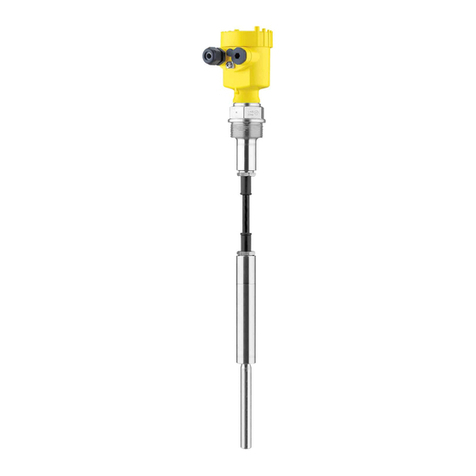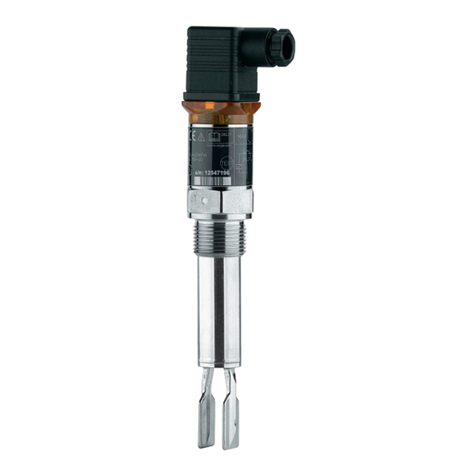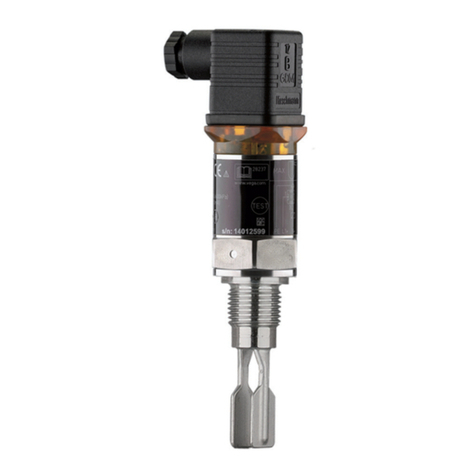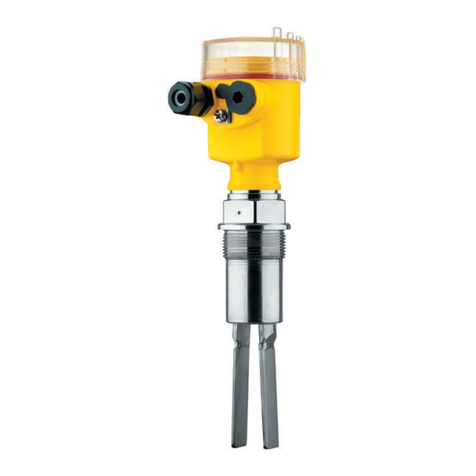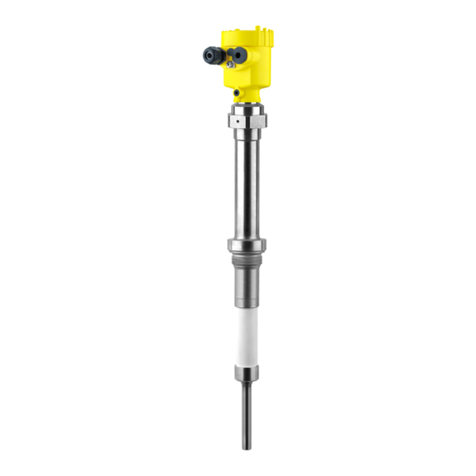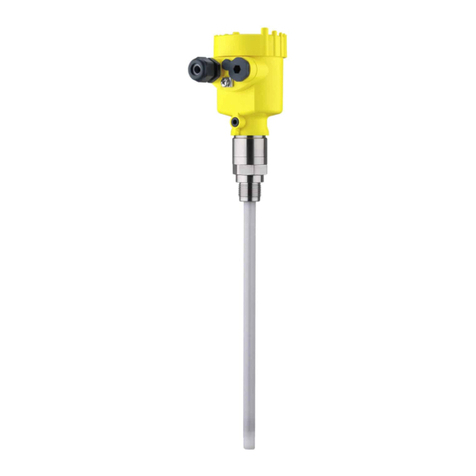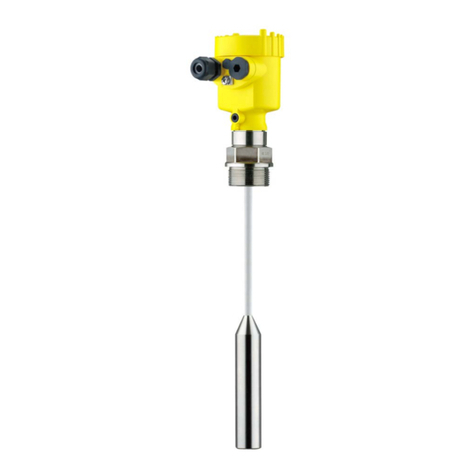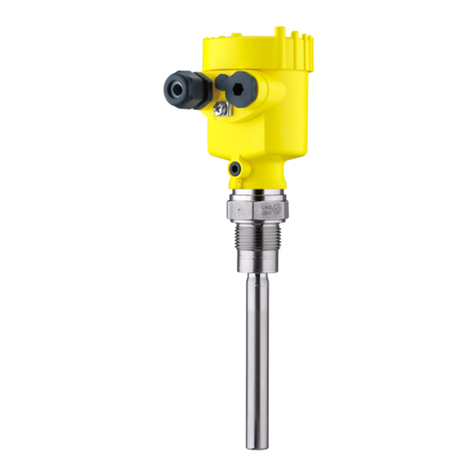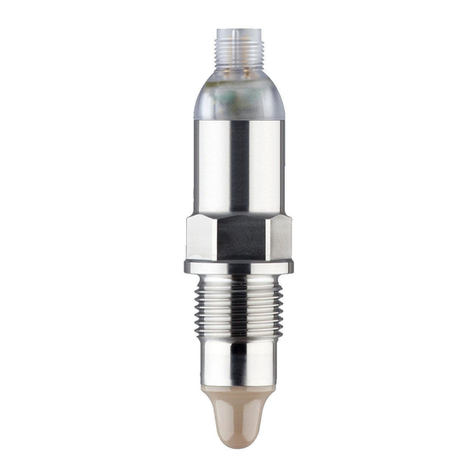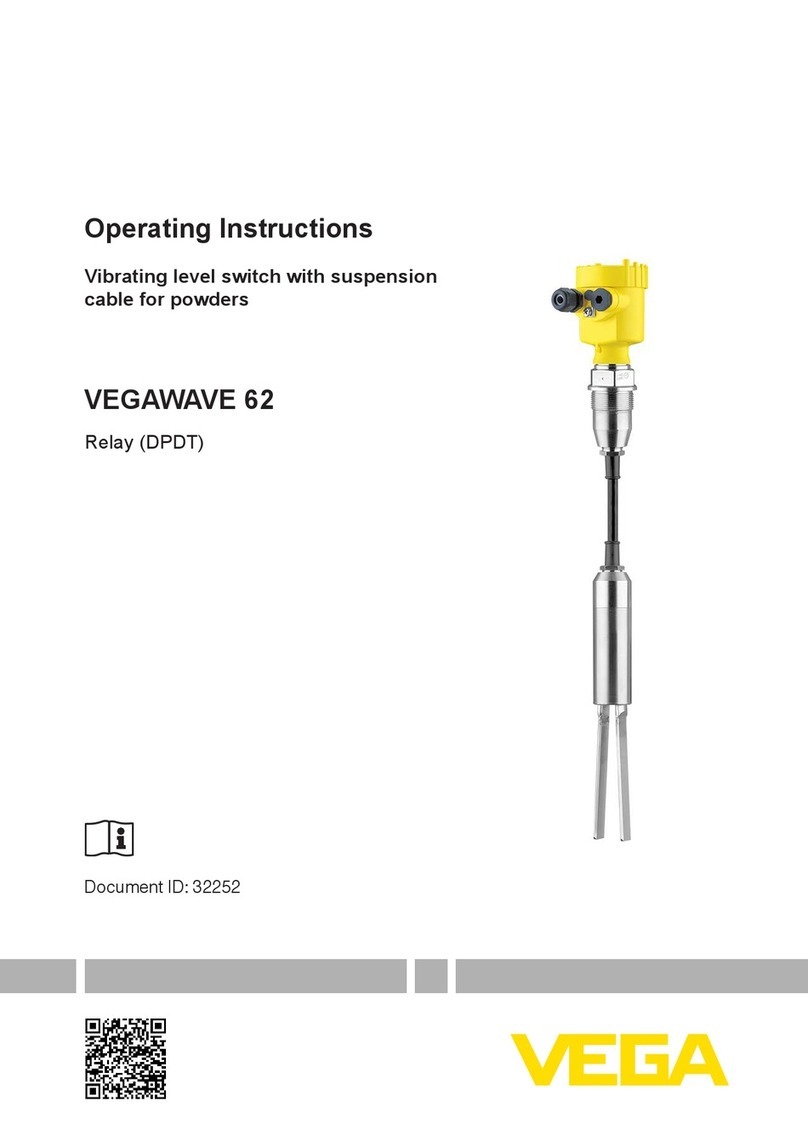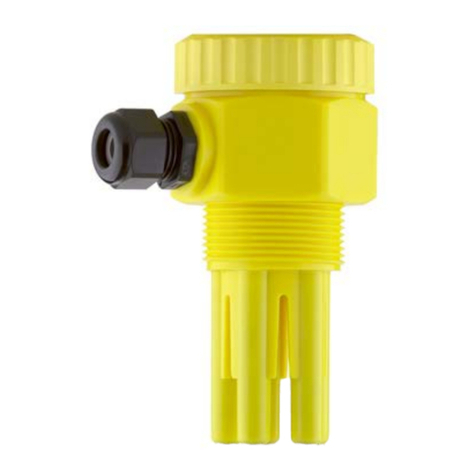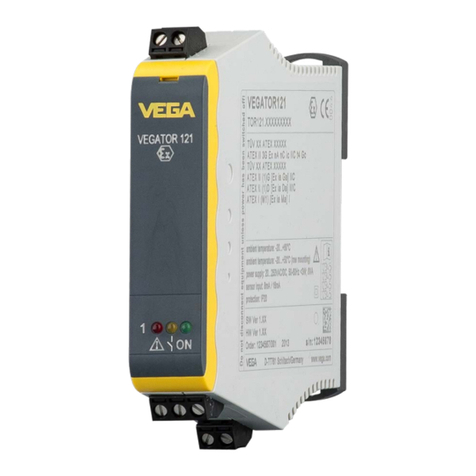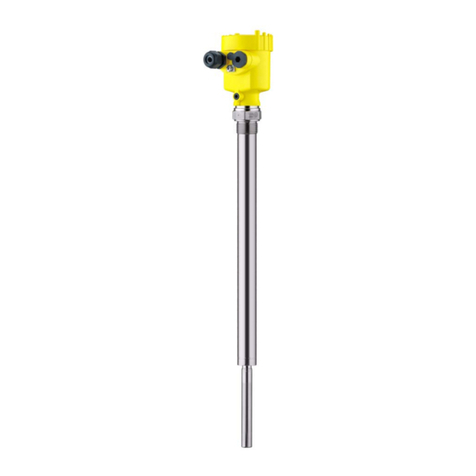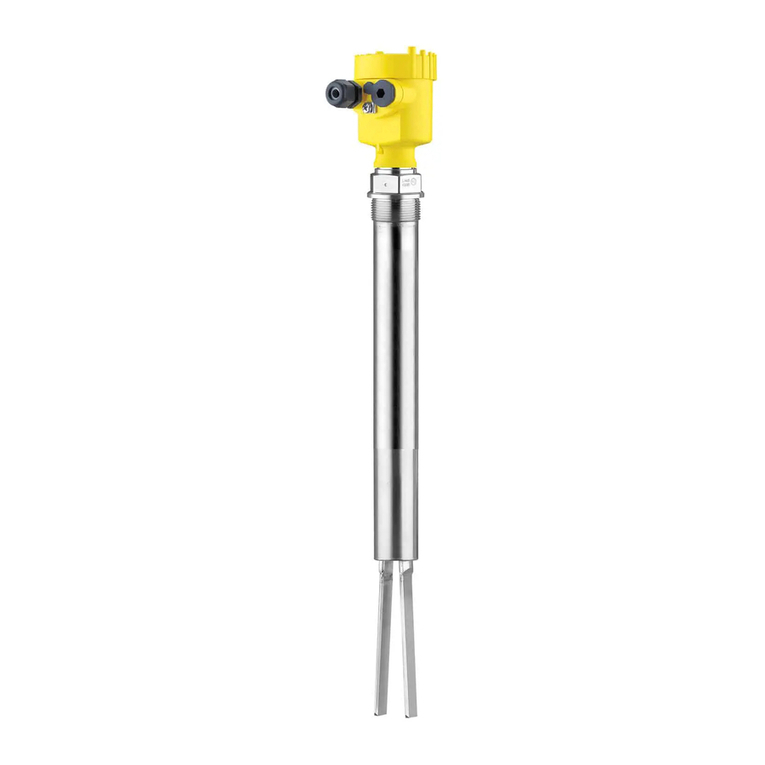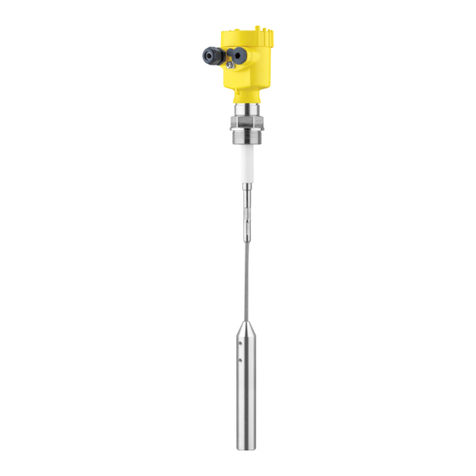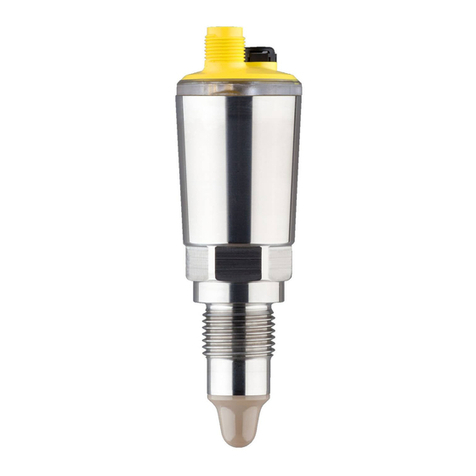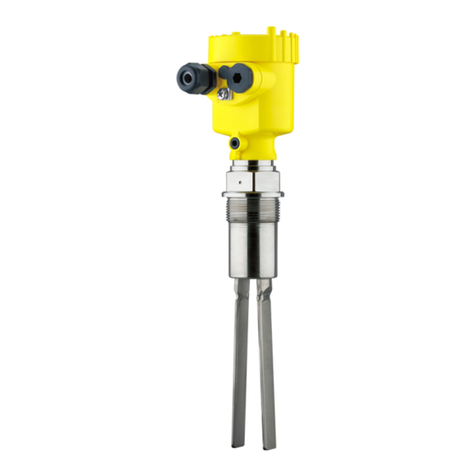
9
3 Product description
VEGASWING 66 • - transistor (NPN/PNP)
43757-EN-130205
3.2 Principle of operation
VEGASWING 66 is a point level sensor with tuning fork for level
detection.
It is designed for industrial use in all areas of process technology and
can be used in liquids.
Typical applications are overll and dry run protection. The small
tuning fork allows use in pipelines. Thanks to its simple and rugged
measuring system, VEGASWING 66 is virtually unaected by the
chemical and physical properties of the liquid.
It functions even under dicult conditions such as turbulence, foam
generation, buildup, strong external vibration or changing products.
Function monitoring
The electronics module of VEGASWING 66 continuously monitors via
frequency evaluation the following criteria:
• Strong corrosion or damage on the tuning fork
• Loss of vibration
• Line break to the piezo drive
If a malfunction is detected or in case of power failure, the electronics
takes on a dened switching condition, i.e. the output is open (safe
condition).
The tuning fork vibrates at its mechanical resonance frequency of
approx. 1400 Hz. When the tuning fork is submerged in the product,
the frequency changes. This change is detected by the integrated
electronics module and converted into a switching command.
VEGASWING 66 can be operated without external evaluation system.
The integrated electronics evaluates the level signal and outputs a
switching signal. With this switching signal, a connected device can
be operated directly (e.g. a warning system, a pump etc.).
The data for power supply are specied in chapter "Technical data".
3.3 Operation
With the factory setting, products with a density > 0.07 g/cm³
(0.025 lbs/in³) can be detected. The instrument can be adapted to
products with lower density.
On the electronics module you will nd the following display and
adjustment elements:
• Signal lamp for indication of the operating condition (green)
• Signal lamp for indication of the switching condition (yellow)
• Control lamp for fault indication (red)
• DIL switch for sensitivity adjustment
• Mode switch for selecting the switching behaviour (min./max.)
Application area
Functional principle
Voltage supply
